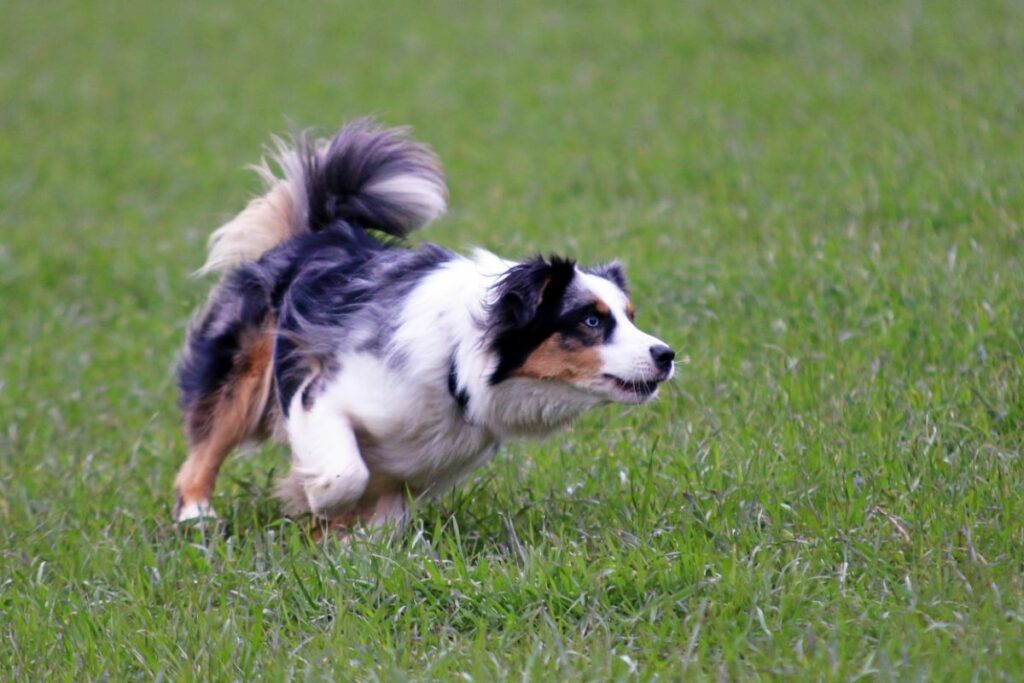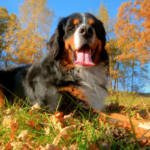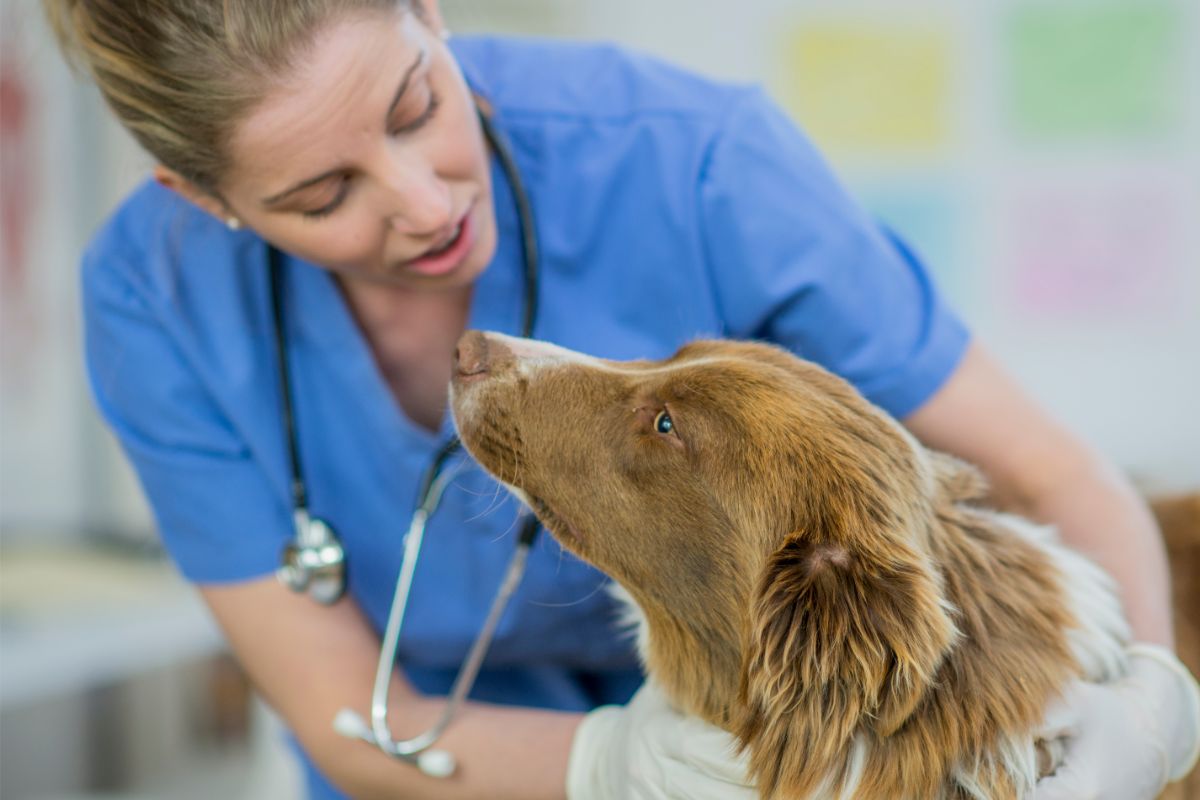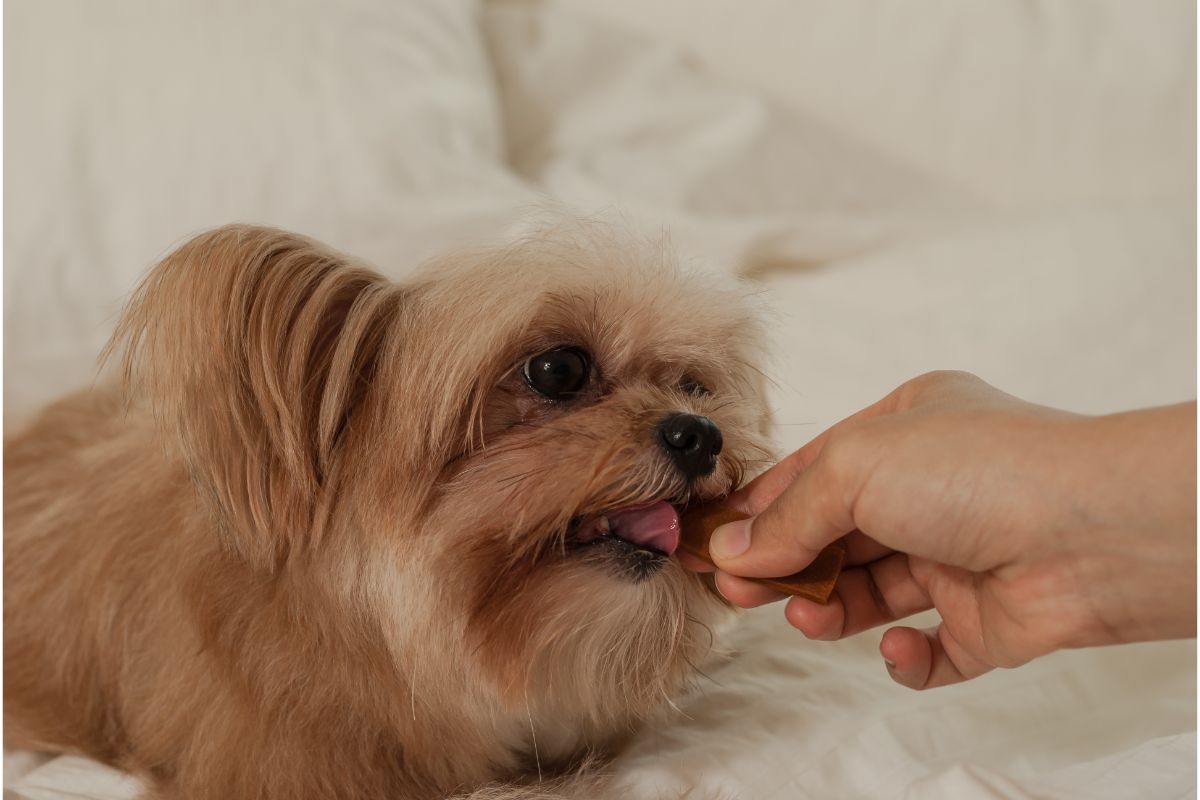Australian Shepherds are smart, striking dogs; they are natural-born herders who found their fame in rodeos.
Nowadays, they’ve made their way into our homes as beloved companions.
If you’ve been thinking about getting an Australian Shepherd, this guide is for you.

Below, we will take a look at what makes this breed unique.
Breed Facts About Australian Shepherds
Despite its name, the Australian Shepherd comes from the United States, but the breed also has origins in the Northwest area of Spain.
In Europe, the Basques worked with an impressive herding dog. As the Basques traveled to Australia, their dogs were bred with the collies – British imports residing in Australia and New Zealand.
The Basques later traveled to California, where ranchers fell in love with their herding dogs.
Further breeding and refining in the US has brought us to the Australian Shepherd we know and love today.
Until the mid-20th century, the Australian Shepherd was purely used as a working dog, but it was then made popular by rodeo performer Jay Lister. And the rest, as they say, is history.
The Australian Shepherd is a medium-sized, sleek, smart, and agile dog. Much like the collie, they have triangular, floppy ears, a flat head, and a long, narrow snout.
Aussies have stunning coats, medium-length coats in colors ranging from liver merle or blue merle to completely liver or black. They can also have white or tan markings.
Australian Shepherd Average Size, Lifespan, And Key Life Stages
Now we know a little more about this beautiful breed’s background, let’s take a closer look at their size, lifespan, and key life stages.
Male Aussies usually reach 20 – 23 inches in height and around 50 – 65 pounds (23 – 29kg), and females usually reach 18 – 21 inches in height and roughly 40 – 55 pounds (18 – 25kg) in weight.
This breed has a life expectancy of 12 to 15 years; later on in this guide, we’ll go over some of the common health complaints that Aussies can suffer from, some of which can alter their lifespan.
As medium-sized pooches, you can expect an Australian Shepherd to reach its adult height by around 12 months of age, but most will continue to fill out until around 18 months of age, although some will be fully grown – in height and weight – by 16 months old.
It can be helpful to understand what to expect at each stage of your Aussie’s life before you bring that bundle of fluff home, so let’s take a look at the key milestones below.
- Two – Three Weeks Old: At around two weeks old, Australian Shepherd pups will start to open their eyes, and by three weeks, those little balls of mischief will be ready to explore their surroundings. They’re still reliant on Mom at this age.
- Four – Eight Weeks Old: At around four weeks, the little tykes will develop puppy teeth, so prepare for plenty of chewing! When they reach eight weeks old, they will be ready for their shots.
- Eight – Ten Weeks Old: When an Aussie reaches around eight to ten weeks old, they will weigh roughly 4-9 lbs (females) and 7-10 lbs (males). It’s beneficial to start training the pups now, whether you’re the breeder or the new owner. Start with the basics: potty training, sit, stay, etc., and you can expand their training routine as they grow.
- Six Months Old: At six months old, your lovable (not-so-little) Aussie is now an adolescent pooch. By this age, they should have the training basics under their belt.
- One-Year-Old: By the time your Australian Shepherd reaches one year old (where did the time go?), they should have reached their adult height. They will continue to fill it out for a few months, though. You can chat with your vet about whether to keep your pooch on puppy food or make the transition to adult food.
- Eighteen Months Old: At eighteen months old, your Aussie should be its full adult height and weight. If you haven’t already weaned your pooch onto adult food, now is a good time to start. Don’t forget to consult with your vet first.
- Ten Years Old: At ten years old, your Australian Shepherd is officially a senior dog. They will likely still be full of beans, but it’s still helpful to change their diet and switch them to senior dog food to support their changing needs.

Australian Shepherd Personality
The Australian Shepherd is an active breed that loves nothing more than to run and play – unsurprising, given their herding history.
They are super intelligent pooches, which generally makes them straightforward to train. They will need plenty of mental stimulation, which is worth bearing in mind.
These doggos can be protective of their family and territory, thanks to their herding background, but they’re usually friendly dogs and aren’t considered to be an aggressive breed.
Aussies usually mix well with other dogs as long as socialization takes place from a young age and as long as you introduce the pooches properly.
This breed makes a good family dog for an active and busy family – and they generally love the company and attention of children (who can match their energy!)
Caring For Your Australian Shepherd
Below, we’ll take a look at some of the key considerations that are specific to your Aussie Shepherd when it comes to diet, exercise, and grooming.
Diet
Until the age of 12 – 18 months, your Australian Shepherd puppy will need to be on high-quality puppy food.
Feeding a puppy-specific diet ensures your Aussie is getting all of the nutrients it needs to grow into a strong and healthy adult dog.
Puppies need more frequent meals compared to adult dogs, so an ideal schedule for a puppy is 3 to 4 meals per day.
This can be reduced to two meals per day when your Aussie reaches around six months old.
When your Aussie reaches its adult size, it will be time to switch to adult food. This switch will usually happen between the ages of 12 to 18 months, depending on your pup’s growth progress. Your vet will be able to advise on the perfect time to make the switch.
When choosing adult food, opt for the best quality you can afford, and make sure it contains at least 18-22% protein.
As an active breed with plenty of energy, some owners prefer to feed a raw diet, but this isn’t mandatory.
When your pooch reaches ten years old, it will be time to swap their diet again – this time transitioning to a senior diet.
Senior food contains more glucosamine and other helpful nutrients to support the needs of an aging dog.
You can treat your Australian Shepherd with snacks but try to make sure treats make up no more than 10% of the diet.
Exercise
We’ve mentioned several times how active these dogs are, and as such, Australian Shepherds need plenty of exercise.
You can expect to carve out at least two hours each day to exercise your Aussie properly.
They will need a good, long walk and, if possible and safe to do so, some time off lead to really spend their energy.
The fun doesn’t end there, though – these intelligent pooches will need plenty of playtime at home. Choose toys that are mentally stimulating to keep them engaged.
Grooming
Australian Shepherds have medium-length coats and are moderate shedders.
They don’t require stringent grooming, but we would recommend giving them a good brush at least once to twice per week.
Start your grooming routine when your Aussie is a pup so they can get used to it and enjoy quality time with you.
And don’t forget to trim their nails and clean their teeth regularly.

Common Australian Shepherd Health Problems
No one wants to think about their beloved dog being poorly, but being aware of the likely issues can really help.
Australian Shepherds are prone to the following health conditions:
- Hip And Elbow Dysplasia: These conditions occur when the hip or elbow joints do not fit properly, potentially leading to arthritis. Responsible breeders must screen for both hip and elbow dysplasia before breeding.
- Eye Problems: Australian Shepherds commonly suffer from eye conditions such as cataracts, progressive retinal atrophy, and Collie Eye Anomaly, which affects the back of the eye.
- Multidrug Resistance / Sensitivity: Certain treatments can prove to be fatal. Your vet will know this and can conduct tests to check for the issue.
In Summary
Australian Shepherds, originally bred as herding dogs, have made their way into our homes and into our hearts.
These playful pooches are good with children and make a great addition to an active family.
With plenty of training and exercise, a good amount of mental stimulation, and the right care, your Aussie will be very content and can live a long and happy life.
If you’re welcoming an Australian Shepherd into your family, you’re in for plenty of fun!
Frequently Asked Questions
Do Australian Shepherds shed?
Australian Shepherds go through a moderate shed. Regular grooming can help to minimize excess hair.
Are Australian Shepherds a good family dog?
Yes, Aussies are usually great family dogs, but it’s worth considering your activity levels as a family, as this breed needs plenty of exercise.
Are Australian Shepherds high maintenance?
They require plenty of attention and exercise, which some people may consider to be high maintenance.
What problems are Australian Shepherds prone to?
Australian Shepherds commonly experience hip and elbow dysplasia, certain eye conditions, and sensitivity to particular treatments.
- A Pawprint Pets Guide To Puppy Breeds – Australian Shepherds - November 23, 2023
- Breed Comparison: Belgian Malinois Vs. German Shepherd - November 22, 2023
- Help! My Dog Won’t Leave His Bum Alone! - November 21, 2023










